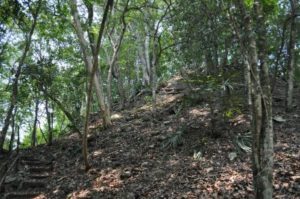
Walking through this place might be a puzzling, yet surprisingly delightful experience for the first-time visitor. Where are all the great stone pyramids, ball-courts, temples, and other monuments so often attributed to great ancient Maya centers? One sees a tropical landscape that is anything but flat. There is a jungle-shrouded mound here, another one over there. A well-planned walking path winds through what one could describe as the Maya version of the Garden of Eden. Like the very first 18th and 19th century explorers of the Maya world, one sees what could be ancient structures still hidden beneath their canopy shroud. Some of them have been partially exposed, betraying what might lie beneath and leaving the rest to the imagination. Visitors soon acquire the impression that this place is very different than any other encountered in the Maya world………..
The Maya Forest as a Garden
In the midst of today’s globalizing forces, the traditional stewardship strategies that conserved the tropics and sustained the rural Maya for centuries are threatened with extinction. Contemporary conservation practices for tropical forest ecosystems have relied upon the western approach: removing the human element from the equation. Yet ecological, agricultural, and botanical research on the Maya forest demonstrates that it is in fact a variegated garden dominated by plants of economic value, and thus highly dependent on human interaction. The co-creation of the Maya and their forest environment is based on a strategy of resource management that resulted in a landscape called the Maya “forest garden.”
In fact, every facet of Maya culture is deeply intertwined with their terrain, betraying a relationship that extends far beyond mere subsistence. Even the Maya language demonstrates a long-embedded knowledge of forest ecology. But until recently, mainstream scholarship on the Maya did not take into account the multidisciplinary lines of evidence that inform this relationship. In his popular synthesis on societal collapse, Jared Diamond, for instance, posits that lowland Maya interactions with the surrounding forest were largely destructive in nature—in particular, deforestation associated with agriculture. Diamond concludes that this deforestation led to the detriment and ultimate ‘‘collapse’’ of the Classic Maya society around 1,000 years ago. Such conclusions are based upon inductive reasoning from a single line of reasoning, without embracing the remarkable sources of data that relate to the region from the fields of biology, botany, and agriculture.
_______________________________________________________________________________________________________________________

Even the Maya language demonstrates a long-embedded knowledge of forest ecology. Photo courtesy Exploring Solutions Past~The Maya Forest Alliance
________________________________________________________________________________________________________________________
Ethnobiologists, economic botanists, and agroecologists working with the Maya today hold a different view of Maya interactions with their environment. Extensive evidence exists on the management of forest resources, the flora and fauna, and the subtleties of Maya ecological knowledge. Traditional practices of forest gardening support a model of long-term, sustainable management of natural resources by the Maya. This view acknowledges the Maya as managers rather than as destroyers, which is an essential step in understanding how to conserve theirs and other threatened tropical ecosystems today. Rather than casting the Maya as destructive – and their ancient ancestors as a “failed society” – the focus of forest gardening is on a responsible interaction with the local environment that can provide western audiences with a model of global sustainability.
______________________________________________________________________________________________________________________

The Maya were forest managers, not forest destroyers. Photo courtesy Exploring Solutions Past~The Maya Forest Alliance
_______________________________________________________________________________________________________________________
El Pilar: Past Treasure, Future Blueprint
El Pilar is not your typical Maya archaeological site. It doesn’t wow visitors with exposed temples, plazas, ball courts, and palaces like those encountered at Palenque or Tikal. Yet, the site does boast imposing temples and expansive plazas wrapped in forest foliage, ranking it among the major ancient centers of the lowland Maya region. Straddling the border of Belize and Guatemala, El Pilar, a designated Archaeological Reserve and Monumento Cultural on its way to becoming a bi-national Peace Park, does not flaunt monumental prowess with cleanly exposed stone structures. 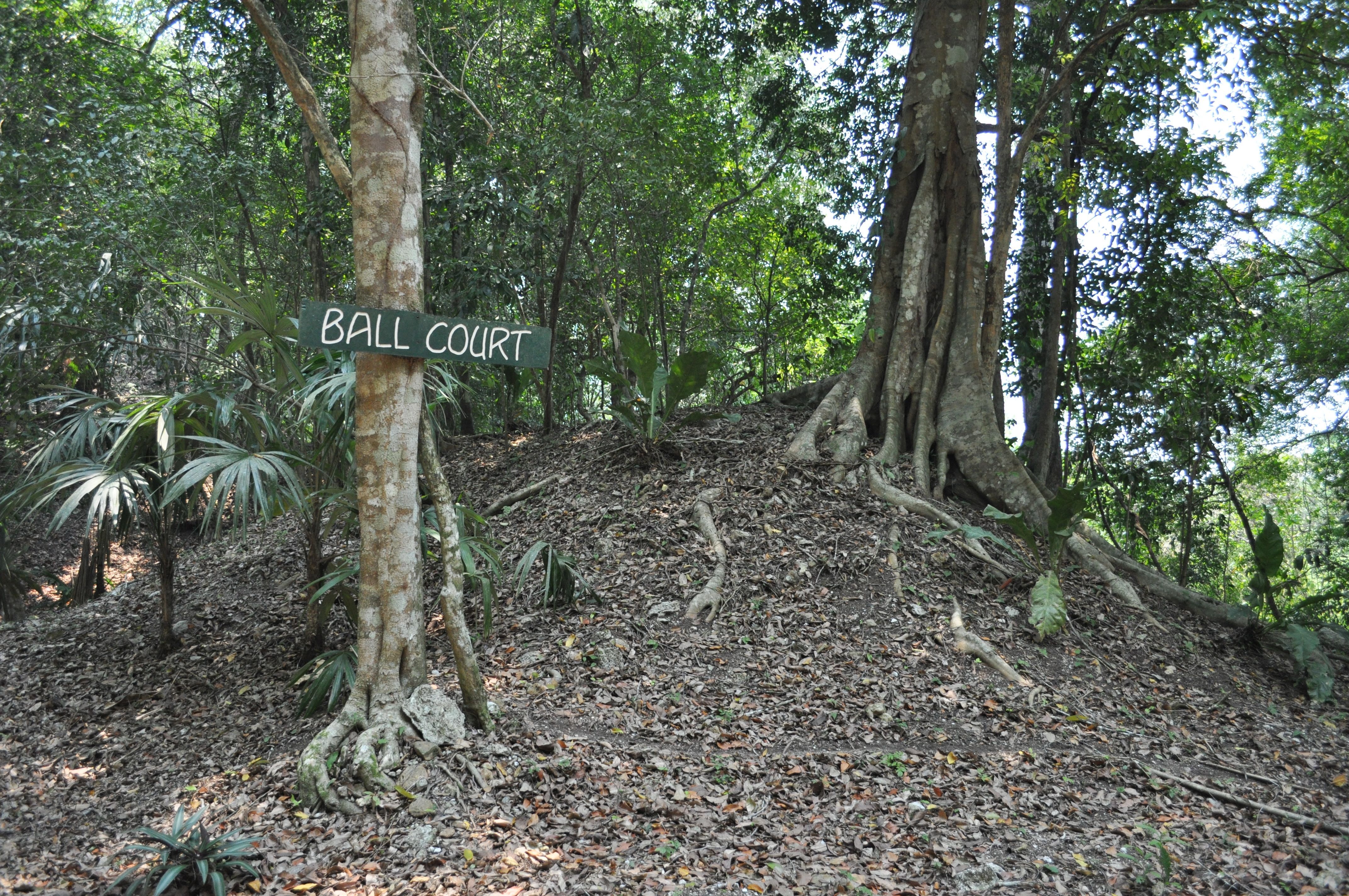 In fact, most of the ancient structures still lie in shade under the forest canopy protected by vegetation, because El Pilar is the subject of a whole new kind of archaeological presentation. It will prove to be a model for projects to come, informing future solutions for how humanity can sustain itself and flourish by cooperating with nature instead of dominating and destroying it.
In fact, most of the ancient structures still lie in shade under the forest canopy protected by vegetation, because El Pilar is the subject of a whole new kind of archaeological presentation. It will prove to be a model for projects to come, informing future solutions for how humanity can sustain itself and flourish by cooperating with nature instead of dominating and destroying it.
The research that underlies the principles of archaeology practiced at El Pilar is based upon the premise that the ancient Maya worked with their tropical environment, as opposed to transfiguring it, and by doing so created a flourishing civilization sustained by the natural rainforest ecosystem. Exploring this concept could answer some age-old questions about what contributed to the remarkable prosperity of the ancient Maya and, certainly, what may have contributed to their decline. By extension, in an age of increasing global environmental awareness this peaceful site serves at once as a living museum, classroom, and laboratory, drawing on what can be learned about ancient cultural practices to create a viable conservation model for the future of our own civilization.

The very recent discovery of El Pilar offers the opportunity to pursue a different kind of conservation strategy called Archaeology Under the Canopy, where the natural forest and surrounding environment of the monuments are maintained to protect the site’s fragile structures from the elements. Living biofilms attack the limestone where exposed, which rapidly deteriorates the vulnerable limestone facades. It is tree cover that reduces exposure to sunshine and rain and maintains an even temperature that will preserve the monuments. Experimentally, Archaeology Under the Canopy serves the needs of archaeologists while experientially furnishing the visitor a more conscientious encounter with the ancient Maya. El Pilar is a place for reflection and introspection, gently shaded by forest canopy and full of a palpable mystery that evokes its enigmatic past; it demonstrates an authentic archaeological discovery rather than a naked city.
When full archaeological investigations were launched at El Pilar in the early 1990s, tropical vegetation had overtaken the site’s temples, plazas, palaces, residential areas, and causeways. The feeling that immediately greeted one at the site is wondrous – it was such an overwhelmingly serene space, offering visitors a sense of personal discovery. Though the ancient site has since undergone extensive mapping and excavation, much of the disturbance has been recovered, and the archaeological team has backfilled their excavations. Visitors today, therefore, can encounter a similar setting and sensation to that felt by the first archaeologists to discover El Pilar. This style of tourism destination model is unique to the treatment of Maya archaeology.
Based on excavations exposures, several key locales at El Pilar have been consolidated for viewing under the forest canopy, while most have been preserved under a mantel of earth for later consideration. Partial exposures offer examples of the monumental architecture, while the covered temples can be compared with those exposed at other sites. The objective of Archaeology under the Canopy is to maintain architectural harmony and integrity and to give priority to the monuments at risk. The pursuit of Archaeology Under the Canopy maintains the holistic vision of the site and ensures stability of temperature, humidity, and precipitation – factors that can quickly erode delicate plaster walls and elaborate facades.
The ancient monuments of El Pilar are protected by their natural habitat from damaging wind, rain, and acid-producing bacteria. Unique in the entire Maya world, a fully excavated house site called Tzunu’un evokes everyday Maya life. The ancient house compound provides a tangible experience of the home, and is surrounded by its own forest garden. Visitors discover the only existing presentation of a Maya house preserved in its forest garden on the Lakin Trail, where they will encounter windows into the past through remains revealed in situ, and catch glimpses of resident animals in the verdant surrounding jungle.
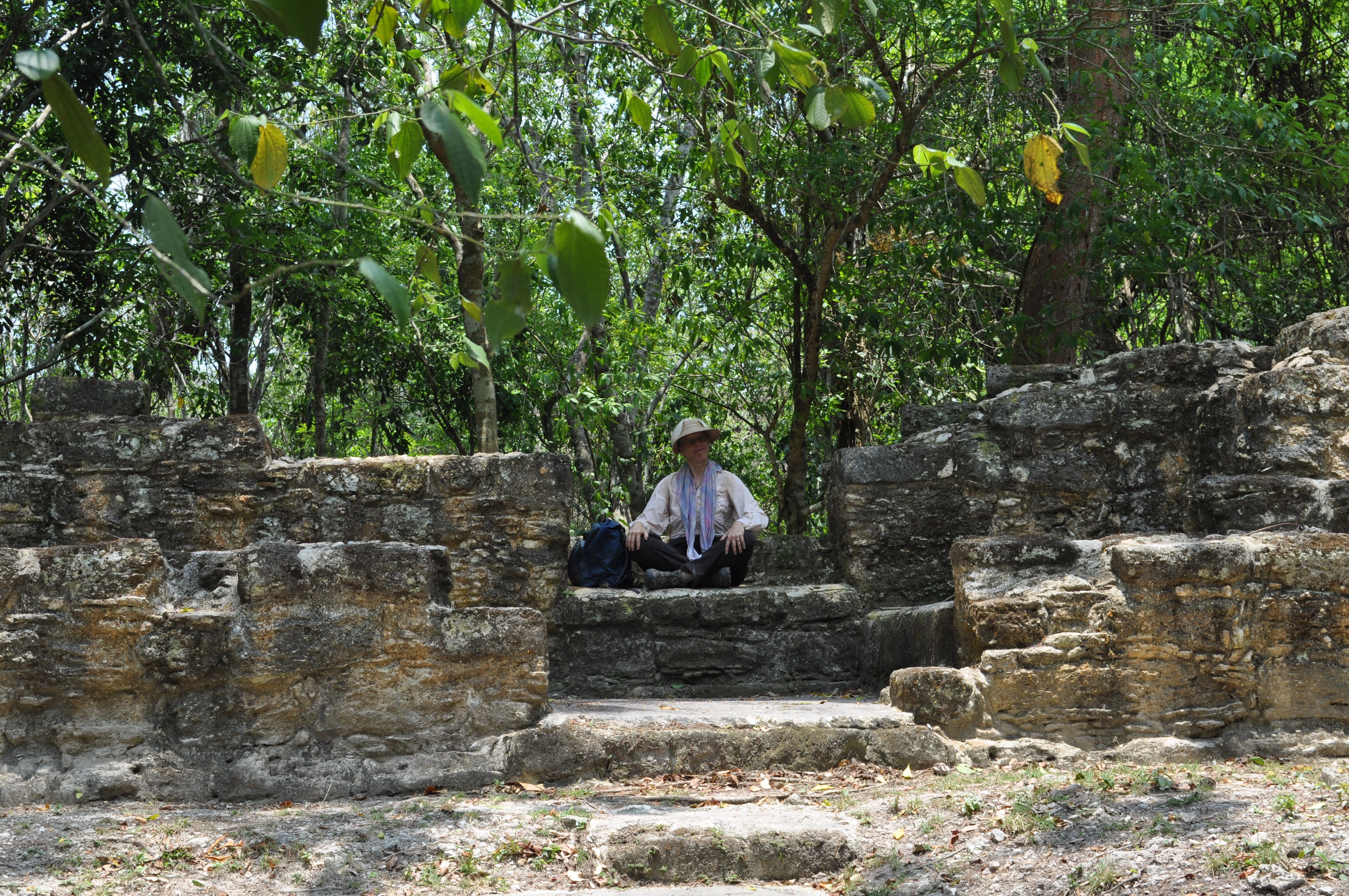 The El pilar house site, Tzunu’un.
The El pilar house site, Tzunu’un.
Intrepid tourists today who choose to visit this ongoing project are captivated by the winding trails and mysterious complexes beneath fragrant boughs of the dominant plants of the Maya forest. One often hears the calls of howler monkeys in the canopy high above and the distinctive announcement of the toucan, smelling the fragrant blossoms of fruit trees wafting through the complexes.
 The trail at El Pilar.
The trail at El Pilar.
Exploring Solutions Past~The Maya Forest Alliance and the Future
Exploring Solutions Past~The Maya Forest Alliance (ESP~Maya), a decade-old nonprofit organization, has been charting the way to conserve the disappearing heritage of the Maya, their tangible ancient monuments and their intangible knowledge of sustainable forest gardening. The aim of ESP~Maya’s work is to showcase one of our world’s vital human landscapes: The Maya forest. To promote conservation, ESP~Maya identifies the sustainable history of the ancient Maya, educates the world on its intrinsic value to nature and culture, and demonstrates the critical expertise of the Maya forest gardeners. ESP~Maya combines international academic scholars with regional development and conservation specialists to promote the principles of Archaeology Under the Canopy and accredit still-thriving Maya conservation traditions. Based on multidisciplinary strategies of research, collaboration in the lab and field has defined the regional resources of the ancient Maya city of El Pilar, a sustainable visitor destination which bridges Belize and Guatemala. At El Pilar, ESP~Maya has created a living museum landscaped with the Maya forest gardeners, integrating traditional Maya forest garden knowledge into local education and international tourism with the experience of Archaeology Under the Canopy.

It has been nearly a century since the creation of the iconic Maya tourist model of Chichén Itzá, one that has sadly proven devastatingly destructive to the ancient Maya architecture. By exposing the limestone monuments to the elements, the strategies undertaken at Chichén privileged immediate viewing rather than long-term stability. Touted today as the most complete restoration of an archaeological site in the Maya region, Chichén Itzá was “restored” in the early 20th century according to a European perspective on the narrative of indigenous life: a subjugated populace and glamorous rituals. The tourist experience today has been fueled by the international tourism industry and the impression that such fanciful reconstructions are what bring international capital to the region. It has been an effective strategy in the past, but it cannot endure.


The presentation of authentic sites of humanity’s history is becoming increasingly valuable to contemporary visitors who are interested in getting more than a shallow impression of the Maya out of their experience. If the established narrative of Maya history is perpetuated, we risk threatening, discrediting, and devaluing the very thing from which we are trying to learn. Rather than weaving imaginative tales from a Eurocentric vision, the practice of Archaeology Under the Canopy pursues the clarification and illumination of our collective memory. To consider the validity of Archaeology Under the Canopy in the context of the Maya opens the door for alternatives to the Chichén model, giving way to fresh treatment and holistic stewardship of future Maya sites, preservation of their natural surroundings, and recognition of the neighboring communities which maintain and surround them.
Cultural Heritage as International Asset
The history of El Pilar is not linked to the great explorers of the 19th century, but emerges at the threshold of the 21st century – a time when we are coming to recognize that not only are our earth’s resources limited, but that those same scarce resources are the increasing focus of a growing tourism industry. By introducing the practice of Archaeology Under the Canopy to Maya sites, we can demonstrate the grandeur of the Maya, protect the monuments for posterity, and shade the visitors who will enjoy a personal experience in the forest garden just as the traditional Maya once did. As we experience the growing scarcity of our natural resources, understanding alternative strategies is vital to the management and cooperation of humanity and the natural world, let alone to our coveted tourist destinations.
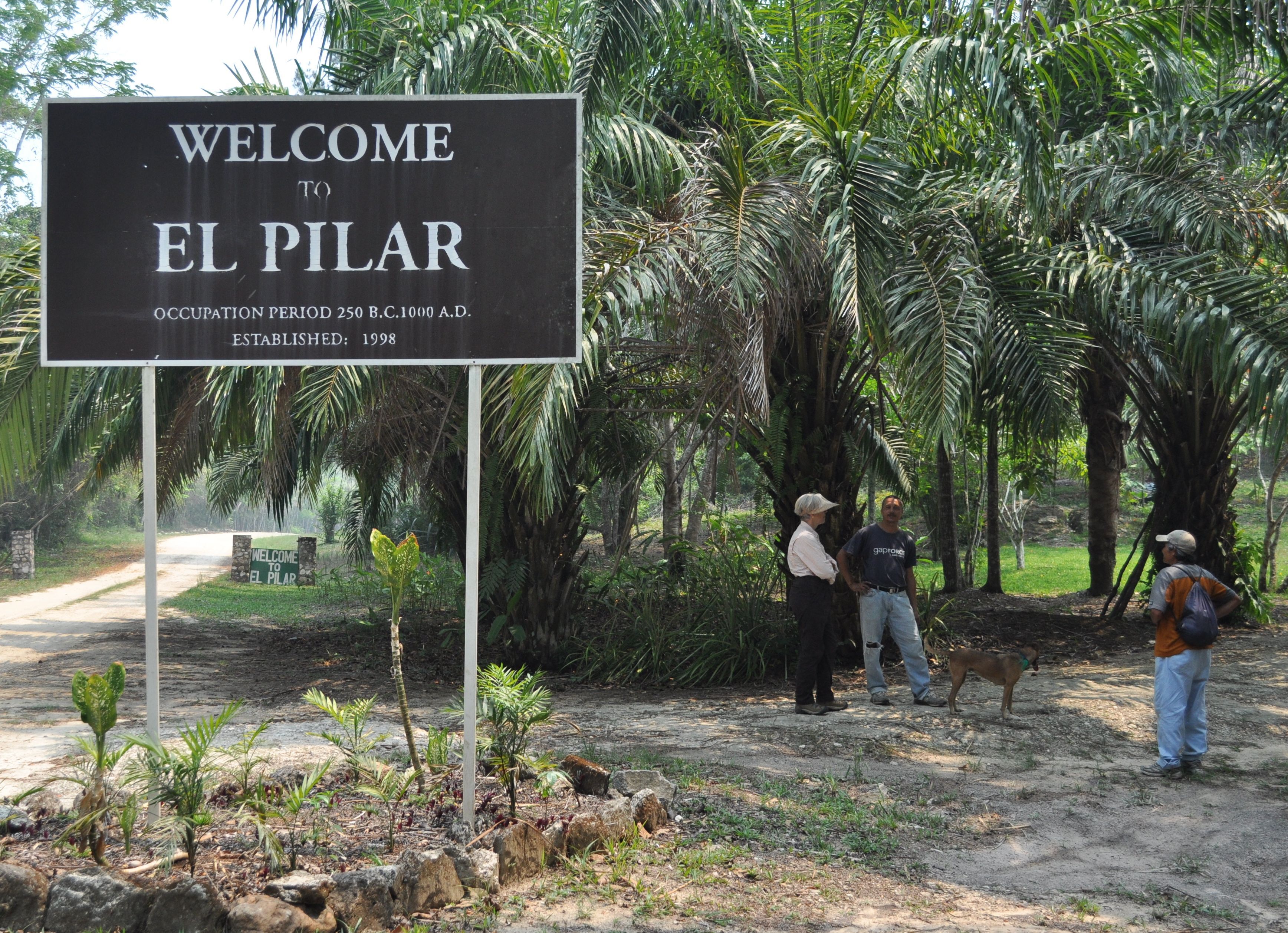 Tourism today has a unique opportunity to acknowledge lost societies and civilizations such as those of the Maya. We also have the chance to embrace the gifts of the present-day communities of Maya descendants, who not only inform our understanding of how these ancient peoples lived, but how they have continued to thrive in their immensely rich and biodiverse habit. Tourism is a central means by which this unique population and their legacy can enter the world economy, featuring their historical, cultural, and environmental heritage. The success of the El Pilar model is dependent upon the results of integrated, collaborative, and multi-disciplinary programs and adaptive management strategies with full participation of the officials, the community, and the experts that are involved in maintaining the reserve on a long-term basis. The overarching vision for El Pilar is a responsibly managed site that benefits local populations, regional governments, and international tourists while promoting sustainable stewardship of the land for posterity. No one goal can be attained at the expense or neglect of another, and we can hardly pursue our objectives without weighing the demands of all parties who have a stake in history’s treasures.
Tourism today has a unique opportunity to acknowledge lost societies and civilizations such as those of the Maya. We also have the chance to embrace the gifts of the present-day communities of Maya descendants, who not only inform our understanding of how these ancient peoples lived, but how they have continued to thrive in their immensely rich and biodiverse habit. Tourism is a central means by which this unique population and their legacy can enter the world economy, featuring their historical, cultural, and environmental heritage. The success of the El Pilar model is dependent upon the results of integrated, collaborative, and multi-disciplinary programs and adaptive management strategies with full participation of the officials, the community, and the experts that are involved in maintaining the reserve on a long-term basis. The overarching vision for El Pilar is a responsibly managed site that benefits local populations, regional governments, and international tourists while promoting sustainable stewardship of the land for posterity. No one goal can be attained at the expense or neglect of another, and we can hardly pursue our objectives without weighing the demands of all parties who have a stake in history’s treasures.
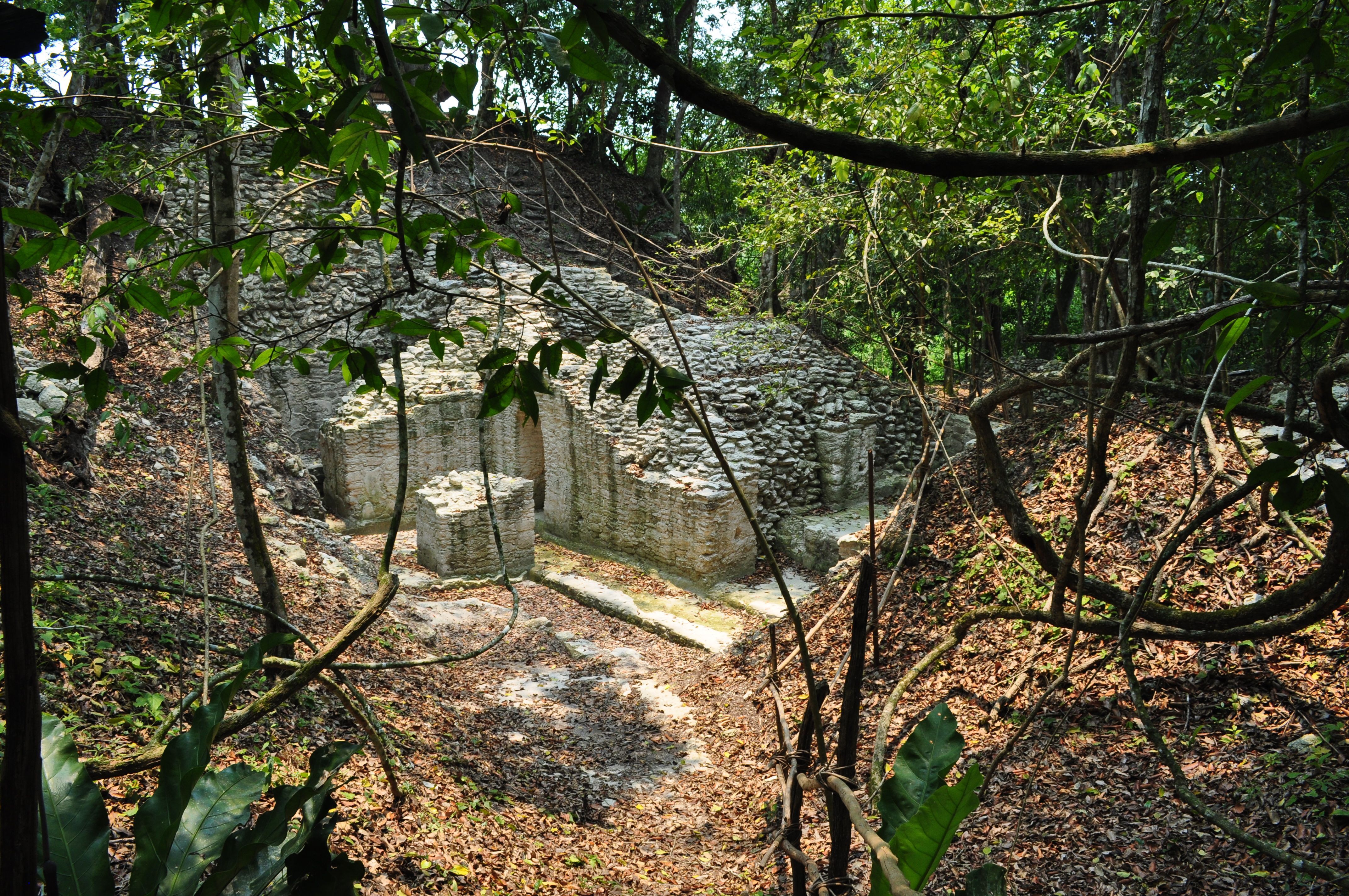 Tourism is the only product where the consumer must journey to the source to appreciate it, and the most recent statistics demonstrate that tourism accounts for a growing proportion of income in the Central American region. Tourists are becoming ever more conscious of the unity of human values and coming to regard ancient monuments as part of our common cultural and human heritage. With this post-national appreciation will come the recognition of our common responsibility to safeguard these monuments for future generations (according to the 1964 ICOMOS Venice Charter). It is with these aims in mind that we see the El Pilar project as an opportunity to explore alternative strategies that can provide a unique educational experience for the visitor and a long-term solution to conservation. The model of Archaeology Under the Canopy practiced at El Pilar has attracted local involvement, student class visits, regional university interns, international permaculture enthusiasts, and worldwide environmental educators. With effective models based on the inherent value of a traditional people’s conservation strategies like those of the Maya, we see increasing acknowledgement that the preservation of living cultures and regional economic development are mutually dependent elements of sustainability. Cultural heritage is thus an asset that is indispensable to the achievement of a sustainable future.
Tourism is the only product where the consumer must journey to the source to appreciate it, and the most recent statistics demonstrate that tourism accounts for a growing proportion of income in the Central American region. Tourists are becoming ever more conscious of the unity of human values and coming to regard ancient monuments as part of our common cultural and human heritage. With this post-national appreciation will come the recognition of our common responsibility to safeguard these monuments for future generations (according to the 1964 ICOMOS Venice Charter). It is with these aims in mind that we see the El Pilar project as an opportunity to explore alternative strategies that can provide a unique educational experience for the visitor and a long-term solution to conservation. The model of Archaeology Under the Canopy practiced at El Pilar has attracted local involvement, student class visits, regional university interns, international permaculture enthusiasts, and worldwide environmental educators. With effective models based on the inherent value of a traditional people’s conservation strategies like those of the Maya, we see increasing acknowledgement that the preservation of living cultures and regional economic development are mutually dependent elements of sustainability. Cultural heritage is thus an asset that is indispensable to the achievement of a sustainable future.
All photos not attributable to Exploring Solutions Past~The Maya Forest Alliance are courtesy BRASS/El Pilar Project.
Photo above: Plaza Jobo of the restricted northern H’Mena acropolis at El Pilar. Courtesy Adalaide Sadler, El Pilar Project.
Photo below: Panoramic view of El Pilar region.





